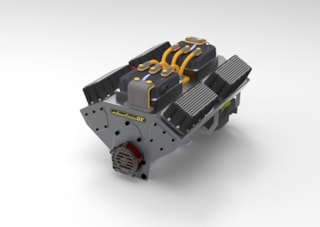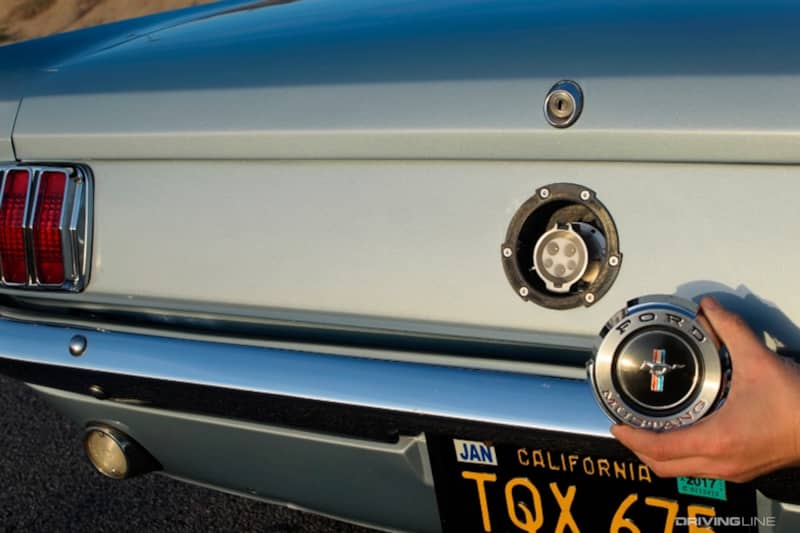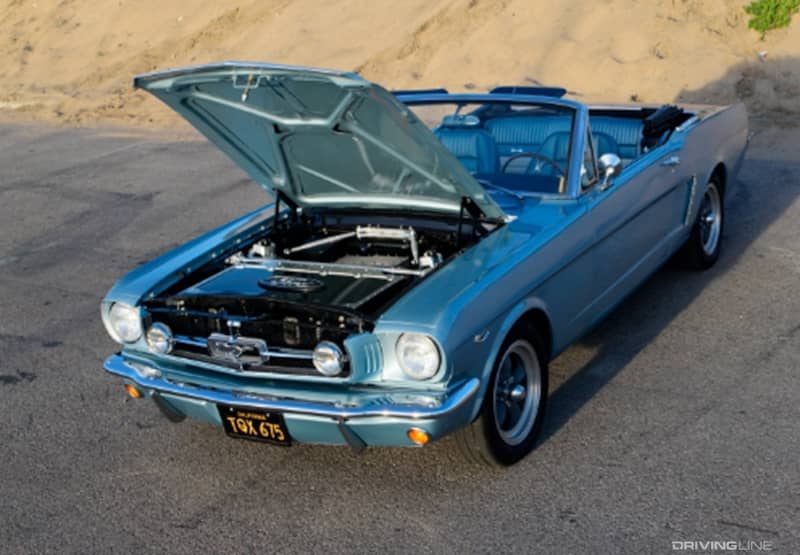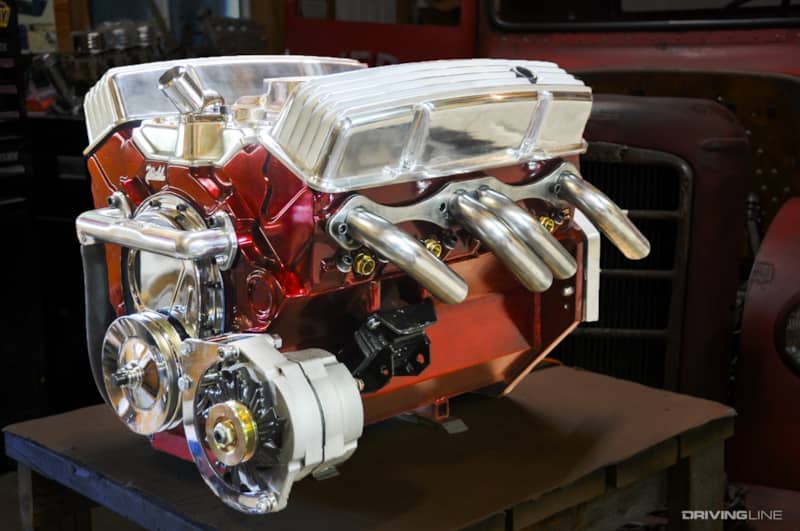How to put an electric engine in a car works
* Disconnect the battery.
* Remove the air intake system.
* Disconnect the fuel lines and exhaust system.
* Unbolt the engine and transmission from the mounts.
* Lift the engine and transmission out of the car.
Step 3: Install the Electric Motor
* Mount the electric motor to the engine mounts.
* Connect the motor to the transmission or differential.
* Install the wiring harness and controller.
Step 4: Install the Battery Pack
* Place the battery pack in the trunk or under the hood.
* Connect the battery pack to the controller.
Step 5: Test the System
* Reconnect the battery.
* Start the car and check that the electric motor is running smoothly.
* Drive the car around to test the performance and range.
Step 6: Make Final Adjustments
* Adjust the controller settings for optimal performance and efficiency.
* Install a battery charger to keep the battery pack charged.
* Add a cooling system to keep the electric motor from overheating.
Step 7: Register the Vehicle
* Contact your local Department of Motor Vehicles (DMV) to register the car as an electric vehicle.
* Obtain new license plates that reflect the electric vehicle status.
**Step 1: Gather the Necessary Materials**
The specific materials you need will depend on the make and model of your car, as well as the type of electric motor and battery pack you choose. However, the following items are generally required:
* **Electric motor:** This is the heart of your electric car, and it will provide the power to move the vehicle. There are many different types of electric motors available, so it’s important to choose one that is compatible with your car and your driving needs.
* **Battery pack:** This is the power source for your electric car, and it will store the electricity that powers the motor. Battery packs come in a variety of sizes and capacities, so it’s important to choose one that will provide sufficient range for your needs.
* **Controller:** This is the brains of your electric car, and it will control the flow of electricity from the battery pack to the motor. The controller also monitors the motor’s performance and makes adjustments to ensure optimal efficiency.
* **Wiring harness:** This is the electrical wiring that connects the battery pack, controller, and motor. It’s important to use a high-quality wiring harness that is properly sized for the amperage of your system.
* **Mounting brackets:** These brackets will be used to mount the electric motor and battery pack to the chassis of your car. It’s important to choose mounting brackets that are strong and durable, and that are compatible with your car’s design.
* **Tools:** In addition to the materials listed above, you will also need a variety of tools to complete the conversion. These tools may include wrenches, sockets, screwdrivers, pliers, and a multimeter.
**Step 2: Remove the Gasoline Engine and Transmission**
Before you can install the electric motor, you will need to remove the gasoline engine and transmission from your car. This is a complex process that should only be attempted by experienced mechanics. If you are not comfortable performing this task yourself, it is best to have it done by a qualified mechanic.
To remove the gasoline engine and transmission, you will need to follow these general steps:
1. Disconnect the battery.
2. Remove the air intake system.
3. Disconnect the fuel lines and exhaust system.
4. Unbolt the engine and transmission from the mounts.
5. Lift the engine and transmission out of the car.
**Step 3: Install the Electric Motor**
Once the gasoline engine and transmission have been removed, you are ready to install the electric motor. The electric motor should be mounted to the engine mounts using the provided mounting brackets. Once the electric motor is mounted, you will need to connect it to the transmission or differential.
**Step 4: Install the Battery Pack**
The battery pack can be placed in the trunk or under the hood of your car. The best location for the battery pack will depend on the specific make and model of your car. Once the battery pack is in place, you will need to connect it to the controller using the wiring harness.
**Step 5: Test the System**
Before you can drive your electric car, you will need to test the system to make sure everything is working properly. To test the system, follow these steps:
1. Reconnect the battery.
2. Start the car and check that the electric motor is running smoothly.
3. Drive the car around to test the performance and range.
**Step 6: Make Final Adjustments**
After you have tested the system, you may need to make some final adjustments to optimize the performance of your electric car. These adjustments may include:
* Adjusting the controller settings for optimal performance and efficiency.
* Installing a battery charger to keep the battery pack charged.
* Adding a cooling system to keep the electric motor from overheating.
**Step 7: Register the Vehicle**
Once you have completed the conversion, you will need to contact your local Department of Motor Vehicles (DMV) to register the car as an electric vehicle. You will also need to obtain new license plates that reflect the electric vehicle status.
3 Ways To Electrify Your Classic Car (And Still Pop The Hood For Bragging Rights)

The idea of engine swaps in classic cars is as old as the first hot rodder who decided they wanted big speed in a package that simply wasn’t available from the factory. There are of course many different reasons to stuff a newer replacement motor under the hood of an older model—ranging from more power, to improved mpgs, to reliability—but the common thread linking almost every one of these projects is the desire to keep enjoying a classic vehicle in a constantly changing world.
Enter the EV swap. The electrification of classic cars has been gathering steam over the course of the past decade or so as greater numbers of aftermarket builders figure out how to reduce the cost of battery technology and provide electric motors that nicely balance drivability with range-per-charge.

One of the most intriguing trends in electrifying vintage vehicles has been to design drivetrains that closely resemble the gas-powered engines they are replacing—and then make them virtually ‘plug and play’ in terms of how they install into a wide range of popular platforms. In fact, some of these new contenders are near dead ringers for their internal combustion cousins, to the point where it would take more than a casual glance with the hood open to know that gasoline had been banished from the equation.
Do electrified classics that look just like the original deal represent the wave of the future for the collector car hobby? Let’s look at a trio of EV swap options that put serious effort into blurring the line between gas engines and electrons.
Electric GT
One of the most established players in the classic EV space is Electric GT, which has been operating out of California since 2013. It was one of the first companies to introduce the concept of an electric ‘crate engine,’ which is a term used in the industry to describe a single housing that contains not just an electric motor, but also the batteries, power management systems, and all other vehicle features (cooling, heating, DC power) required for a successful transplant.

Electric GT systems mimic a traditional v-style engine block in terms of layout, with four caps on top of where the valve covers would typically be found, and a bespoke valley cover, all of which conceals its electric inner workings.
Unlike a mass-produced electric car, the Electric GT ‘GTE Motor Block’ replaces the traditional gas engine under the hood and can be bolted to existing transmissions. Interestingly, the GTE system is intended to work specifically with manual gearboxes, and while a clutch pedal isn’t required when pulling away from a stop the rest of the time it acts much like a regular shift-it-yourself unit (except it won’t blow up at redline if you simply leave it in gear and cruise around).

Battery range for a typical installation is between 70 and 150 miles per charge, depending on vehicle weight, and the company even offers extended range batteries that can be installed alongside the GTE block. The standard GTE-253 kit provides 153 horses and 244 lb-ft of torque, but the characteristics of its instant-on torque application make driving it feel like you’re behind the wheel of a gas engine with about twice that power. It’s not cheap to pick up the GTE package—you’re looking at a price tag starting in the low-$30k range—but it’s an all-inclusive way to go electric without cutting up your classic.
Webb Motorworks
Webb Motorworks spent much of 2019 developing what it calls the E-Crate SBC. This electric drive system fits entirely inside a small block Chevrolet casting. In fact, from the outside it’s quite difficult to tell that you’re looking at a complete electric motor solution that conceals its electric innards inside one of the most popular gas engine designs of all time.

Webb already had experience building unusual engine conversions, including 16-cylinder and 12-cylinder flatheads as well as flathead conversions for the regular SBC. The E-Crate SBC makes use of a new small block casing made to Chevrolet specifications, which can then be bolted up to factory motor mounts, and even maintains the headers/heads/intake/accessories look of a gas engine.

Also included with the E-Crate is a lithium-ion battery pack and output of between 250 to 400 lb-ft of torque from its electric motor. Like the Electric GT setup, it can be bolted to a manual transmission. Webb Motorworks intends to begin offering full kits for the E-Crate later in 2020.
General Motors
With so much invested in electric cars like the Volt and the Bolt, it’s perhaps no surprise that GM has also dipped its toe into the classic car EV scene. Debuting at SEMA in 2019, General Motors offered its own take on the electric crate motor inside its ‘E-10’ 1962 Chevrolet pickup concept.

The E-10 setup has yet to become available for aftermarket builders, but each of its components is sourced from the company’s existing parts bin. A pair of electric motors, mounted under the hood, provide 450 horses and 470 lb-ft of torque. This is a big step up over the other EV classic car conversions on our list, and it’s made possible by the use of the pickup’s cargo bed for a large battery pack (which is hidden under a tonneau cover).

Of the three, the E-10 with its ‘eCrate’ setup looks the least like it has a traditional engine between the front fenders, although care has been taken to preserve the v-shape beloved by hot-rodders. Still, by leveraging the extra cargo capacity of a pickup platform to improve both power and range, GM’s entry into the electric classic car world illustrates how creative EV installations can get.
https://nodsauto.com/how-to-put-an-electric-engine-in-a-car-works/
https://www.drivingline.com/articles/3-ways-to-electrify-your-classic-car-and-still-pop-the-hood-for-bragging-rights/
